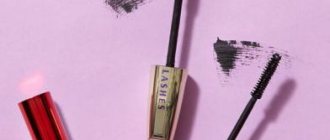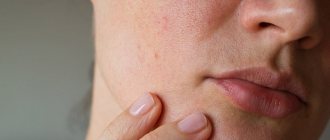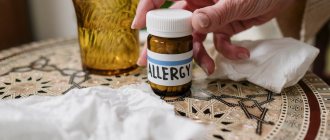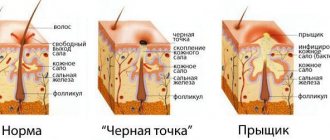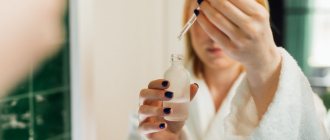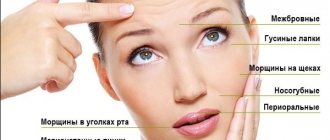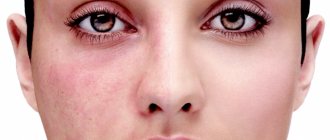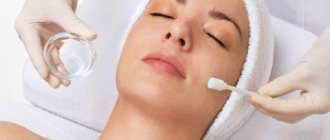A burn is severe tissue damage caused by heat or chemicals. It is one of the most common injuries. Burns can affect large areas of the skin and leave deep scars forever. The consequences of burns negatively affect professional growth, relationships with the opposite sex and self-esteem.
For our subscribers on Instagram, our partner will send an anti-wrinkle complex based on adapalene ADAPALEX™ for free . The offer is valid for a limited time , subscribe and pick up via the link.
Therefore, it is very important to determine the type and extent of damage, as well as to provide the necessary assistance in a timely manner. It is on these conditions that further recovery and the likelihood of consequences depend.
Types of burns by type of injury
Wounds received after a burn require long-term treatment
Burns are classified in different ways in medicine. One of the most used classifications is based on the type of lesion. This means that each type of burn differs from the others in the factor that caused the skin damage. Thus, the type of lesion will determine subsequent treatment, as well as the recovery period.
Thermal burns
The most dangerous type of burn. Can be obtained from exposure of the skin surface to high temperature. Among the most unpleasant consequences are not only the remaining scars, but also the likelihood of loss of vision and severe damage to the respiratory organs.
The resulting wounds after a burn require long-term treatment. If the severity of tissue damage corresponds to the third or fourth degree, then the appearance of scars after wound healing is inevitable.
Chemical burns
Today, a chemical burn to the face can easily be obtained at home by purchasing low-quality cosmetics or a strong cleaning product.
Electrical burns
Electrical burns are quite rare. It can be obtained from a place on the skin that becomes the point of entry and exit of electrical charge. A characteristic feature of this type of burn is small but very deep marks. An electrical burn wound resembles a fire burn and is caused by a short circuit.
Radiation burns
Cases of burns on the face from radiation are not uncommon. Radiation burns can occur on the street, as well as during cosmetic procedures in beauty salons.
Light burns
Light burns can occur if you do not follow the simple rules of exposure to the sun. If you don't use sunscreen or wear a hat, there is a risk of getting burned. It is characterized by superficial skin lesions that go away very quickly.
Ionizing burns
This type of damage to body tissue can occur from a laser in a beauty salon during the use of ionizing radiation.
The wound from a burn is shallow, but getting rid of it can be difficult, since the laser injures nearby tissues: the walls of blood vessels become very brittle, bleeding occurs, and the ability of cells to recover is reduced.
Combined burns
In medicine, there is also a type of combined burns. Fans of modern cosmetology and beauty salons can get this type of burn. Since this is where you can burn the skin with cosmetics and laser at the same time.
How to avoid complications?
In order not to aggravate the situation when treating gum burns, it is important to be attentive to yourself until the injury passes.
- For any type of gum burns, dentists do not recommend eating spicy, sour, or salty foods until the tissues are completely restored. Strong flavors irritate the affected tissues and can significantly prolong the healing process.
- You should not eat too hot foods - both during treatment and in the future, when the gums recover after the burn.
- All medicines, household chemicals, paints, solvents, and building materials must be stored in specially designated areas out of the reach of children.
If the pain from a burn becomes excruciating, we can take painkillers or use light anesthetic gels with analgin or benzocaine.
Complex gum burns, in which soft tissue dies, can only be treated surgically. The doctor in the hospital removes dead pieces of tissue and covers the damaged areas with donor parts. Such a “jewelry” operation often requires repetitions and additions. After treatment, the surgeon must prescribe antibiotics to the patient so that bacteria and microbes do not appear in the wounds and dangerous suppuration does not begin.
We hope that all of the above tips on caring for burnt gums will be for informational purposes only. Be careful and attentive to yourself, and accidents will bypass you.
Sources:
- The problem of treating inflammatory periodontal diseases in patients suffering from type 2 diabetes mellitus E.A. KHROMOVA* Ph.D., Associate Professor of the Department I.V. KULIK* Ph.D., Associate Professor of the Department N.A. UDALTSOVA**, ***candidate of medical sciences, associate professor of the department; Deputy Chief Physician for Organizational and Methodological Work A.K. IORDANISHVILI****,*****Dr.Med.Sci., Professor, Professor of the Department *Department of General Dentistry, North-Western State Medical University named after. I.I. Mechnikov" of the Ministry of Health of Russia; ** St. Petersburg State Budgetary Healthcare Institution “Dental Clinic No. 29”, Frunzensky District, St. Petersburg; ***Department of Maxillofacial Surgery and Surgical Dentistry of the Federal State Budgetary Educational Institution of Higher Education "St. Petersburg State University" of the Government of Russia ****Department of Orthopedic Dentistry of the Federal State Budgetary Educational Institution of Higher Education "North-Western State Medical University named after. I.I. Mechnikov" of the Ministry of Health of Russia; *****Department of Maxillofacial Surgery and Surgical Dentistry of the Federal State Budgetary Educational Institution of Higher Education "Military Medical Academy named after S.M. Kirov" of the Russian Ministry of Defense;
- The role of anti-inflammatory rinse in the treatment of periodontal diseases (L.Yu. Orekhova, A.A. Leontyev, S.B. Ulitovsky) L.Yu. OREKHOVA, Doctor of Medical Sciences, Prof., Head of Department; A.A. LEONTIEV, dentist; S.B. ULITOVSKY, Doctor of Medical Sciences, Prof. Department of Therapeutic Dentistry of St. Petersburg State Medical University named after. acad. I. P. Pavlova
- The role of hygiene products in the treatment of periodontal diseases (S.B. Ulitovsky Honored Doctor of the Russian Federation, Honored Dentist StAR Prof., Doctor of Medical Sciences, Department of Preventive Dentistry of Pavlov Pavlov State Medical University, St. Petersburg) S.B. Ulitovsky - Honored Doctor of the Russian Federation, Honored Dentist of StAR, Prof., Doctor of Medical Sciences; E.S. Alekseeva - associate professor, candidate of medical sciences; A.A. Vasyanina - associate professor, candidate of medical sciences; V.A. Grigoriev - Associate Professor, Ph.D.
Classification of burns by degree of damage
It is customary to distinguish 4 degrees of burn damage to the skin of different parts of the body and face.
First degree burns
The top layer of skin is not severely affected. Manifestations: redness, slight swelling, pain. Healing occurs within a few days. Affected skin cells dry out and fall off. There are no scars left on the skin.
Second degree burns
The upper layer of skin is affected much deeper. Manifestations: the same as in the first degree, but small bubbles with liquid still form. The recovery period takes 2 weeks until the skin regenerates on its own. Consequences rarely appear.
Third degree burns
Severe damage to all layers of the skin. This type of burns is usually divided into two types:
- grade “A”: the inner layer of the skin, the dermis, is not completely affected, its lower part is preserved. Manifestations: formation of a dark scab, large blisters. If the wound does not become infected, independent regeneration occurs, but there is a danger of secondary deepening of the burn;
- grade “B”: complete destruction of all layers of the outer cover.
Fourth degree burns
Complete destruction of the dermis and epidermis, nearby tissues, burning of bones and muscles. Once the tissue has healed, the scars remain for the rest of your life.
"Solcoseryl"
Among the features of this drug, it is worth noting its ability to quickly regenerate damaged skin tissue. However, this cream has no restrictions on its use. By acting on tissues, it helps to activate collagen production in them. This leads to the fact that the skin begins to recover naturally. The only contraindication to the use of this drug is the occurrence in a person of individual intolerance to some of its components.
What to do when your face is burned
How to provide first aid if you or someone else has a facial burn? Please note that first aid for a burn is carried out according to certain rules.
After an accident occurs, you need to call and wait for an ambulance. Also at this stage it is important to stop contact with the damaging factor.
Namely:
- extinguish the flame, remove boiling water or steam;
- stop interaction with electric current;
- Wash your face after contact with chemicals.
Directing a stream of cold water onto the face is allowed only if the skin is intact. Do not apply sour cream or vegetable oil to the wound after a burn.
It is forbidden to remove remnants of clothing or a hot object that has stuck to the skin from the face after a burn. This should only be done by a doctor, as too large pieces of skin may come off and bleeding may occur. At home, there is a danger of infection if the wound comes into contact with any objects.
It is not recommended to treat a wound on the face and apply a bandage without special skills and medical training for this. Without painkillers, this process will cause the victim severe pain.
If transportation of a patient is required, his entire body must be examined. Check to see if he has any additional injuries (depending on the circumstances of the accident). In the absence of emotional reactions in the victim, such as screaming and crying, you need to remember that with third-degree burns a state of shock often occurs.
Not everyone knows which doctor can help with a facial burn, but this question is wrong, because the first condition for medical care is calling an ambulance team.
If the burn is minor, you can get to the hospital on your own. If you have a third or fourth degree burn, surgery will be required at a burn center. In all other cases, you need to contact a dermatologist or therapist.
Radevit
This ointment contains components that enhance the regeneration of skin damaged after a burn (vitamins A, E and D). "Radevit" accelerates the healing of thermal burns and uninfected wounds, stimulating tissue metabolism. The ointment reduces skin itching in dermatoses.
In addition, this burn remedy perfectly moisturizes the delicate skin that grows on wounds. It does not crack and there is no risk of re-infection.
"Radevit" has practically no contraindications, so this ointment for burns can be used in children under one year old, pregnant and lactating.
Radevit
Retinoids, Russia
Radevit is a drug that improves trophism and tissue regeneration, for external use.
It has a dermatoprotective, antipruritic, anti-inflammatory effect. from 280
5.0 9 reviews
1389
- Like
- Write a review
First aid for facial skin burns
First aid is provided directly on site or in the hospital. If it is carried out competently, it will quickly heal the burn on the face, speed up the recovery period and reduce the risk of consequences. It consists of the following steps:
- Before treating a burn on the face, you need to administer anesthesia, which depends on the severity of the tissue damage. Nonsteroidal anti-inflammatory drugs (Ketoprofen, Ketorolac), painkillers and antipyretics (Paracetamol), as well as narcotic painkillers (Omnopon, Morphine, Promedol) are used. The use of local anesthesia is considered common.
- Treatment of burn wounds consists of the following stages: the affected epidermis is removed, the blisters are drained, and a bandage is made.
- If the burn is determined to be first or second degree, the victim is prescribed treatment at home and a prescription for the required drug is issued. After this, the patient comes for a medical examination.
- For third and fourth degree burns, competent medical care is provided in hospital treatment and consists primarily of the use of infusion therapy.
Experts' opinion
The conducted clinical study proves the high efficiency, safety and tolerability of products for daily skin care of children with mild and moderate forms of atopic dermatitis and during remission, accompanied by a decrease in the quality of life of patients. As a result of therapy, a decrease in the activity of the inflammatory process, a decrease in dryness, itching and flaking was noted.
Clinical studies have confirmed that bisabolol inhibits the production of anti-inflammatory mediators NO and PGE2 in cells, reduces the expression of iNOS and COX-2 genes by inhibiting the NF-kB and AP-1 signaling pathway. In addition to the anti-inflammatory effect, tests have also proven the bleaching and lightening activity of the substance.
One of the key components of the cream is violet extract. This plant is widely used in medical practice, due to the richness of its chemical composition. Violets are rich in flavonoids; anthocyanin glycosides and phenolcarboxylic acids are found in their flowers. The plant extract is prescribed by specialists for various skin diseases.
Sources:
- Yukhtina N.V., Modern ideas about atopic dermatitis in children
- Kamasheva G.R., Khakimova R.F. Valiullina S.A., Methods for assessing the severity of atopic dermatitis in young children, Dermatology journal, 2010
- Kovyazina N.A., Fedosimova N.A., Illek Ya. Yu. Diagnosis of atopic dermatitis in young children, Vyatka Medical Bulletin, 2007
Proper treatment of burns
Further treatment of burns consists of the use of local disinfectant preparations to prevent wound infection:
- antiseptic oxidizing agents: potassium permanganate and 3% hydrogen peroxide solution;
- antiseptics: Dioxidin, Ethacridine lactate, Quinoxidin, Furacilin, Nitazol, Furagin;
- cationic disinfectants (Chlorhexidine, Decamethoxin), ionophores (Gramicidin, Valinomycin), silver nitrate;
- antibiotics: Levomycetin, Erythromycin;
- streptocid.
The listed drugs make it possible not only to remove redness of the skin after a burn, but also to avoid infection in the wound, which promotes speedy healing. But using them on your own initiative is strictly prohibited. It depends solely on the doctor’s decision what the patient should apply to the damaged skin.
To localize pain in a hospital setting, the following means are used:
- Droperidol;
- Ketamine;
- Midazolam;
- Sodium hydroxybutyrate;
- Propofol;
- Sodium thiopental;
- Ftorotan;
- Fentanyl.
Once you have a burn wound, you will need to choose a drug to treat it. First, consult a doctor who will prescribe medications based on the severity of the burn and the type of injury. If the burn is superficial, then to heal the skin you can use drugs such as:
- Bepanten;
- Panthenol;
- Rescuer;
- Olazol;
- Levomekol;
- Solcoseryl;
- Eplan;
- Ebermin;
- Furacilin ointment;
- Actovegin;
- Radevit;
- Syntomycin ointment;
- Dermazin;
- Sea buckthorn oil;
- Argosulfan;
- Calendula ointment.
This variety of medications should not replace a visit to the hospital and consultation with a doctor. Remember that the burn is on the face, so it is very noticeable. And any side effects from improper use of the drug can greatly harm your appearance.
Considering that most often women get burns from cosmetics or cleaning substances, it should be noted that only a dermatologist is able to choose the right treatment package. In addition, you need to find out from him about the possibility of using folk remedies.
Stellanin
The ointment is intended for the treatment of first and second degree burns, as well as mechanical damage to the epithelium, trophic ulcers, postoperative wounds, etc. The active ingredients of the drug are diethylbenzimidazolium triiodide, dimethyl sulfoxide, iodine, purified petroleum jelly.
Stellanin ointment
Stellanin has a disinfecting and antibacterial effect, prevents the appearance of pathogenic microflora and accelerates the healing process. This is a well-proven remedy, but it has many serious contraindications that you should definitely familiarize yourself with.
Treatment of facial burns at home
To treat first- and second-degree burns on the face, your doctor may recommend using some folk remedies that help wounds heal faster. These can be daily external compresses to the burn site based on medicinal herbs and food products:
- lingonberry juice;
- decoctions from oak, aspen or elm bark;
- apple puree;
- chokeberry berries;
- compress of water and baking soda;
- warm cottage cheese;
- mask of egg white and 3 tablespoons of vegetable oil;
- white cabbage leaves;
- mumiyo solution (3 g per glass);
- crushed charcoal.
If a chemical burn is treated at home, then medical supervision must be a prerequisite.
Typically, such therapy comes down to the use of such means as:
- Dexpanthenol to prevent inflammation.
- Preparations based on vitamins A, B, E and vegetable oil.
- Mephenate is an analgesic and anti-inflammatory drug.
- Levosin, Olazol, Dioxyzol - for wound healing.
- Actovegin accelerates skin regeneration.
- Sudocrem, Alfogin, Panthenol are drugs with analgesic, antimicrobial and healing effects.
- Miramistin is an anti-inflammatory drug.
When it is necessary to treat a sunburn of the face at home, a complex of traditional medicine and medications is used:
- Lubricate your face with sour cream, kefir or sour milk.
- Use raw potatoes as a compress.
- Apply an aloe leaf cut in half to the affected skin.
- Make a compress from chamomile infusion.
- Apply Panthenol to the burn site.
- Apply hydrocortisone ointment against skin inflammation.
- Apply Indomethacin and Diclofenac against swelling and pain.
- Use cooling gels for pain relief.
Panthenol spray
This burn remedy is sold in a can - a gentle airy foam is sprayed directly onto the affected area. The great advantage of Panthenol is that it is used not only for household and sunburns, but also for scratches, abrasions, and the treatment of postoperative wounds. The active substance in the burn spray is dexpanthenol, which synthesizes special biologically active substances in the skin that help injuries heal faster and relieve inflammation.
Panthenol has a very convenient method of application, which does not require sponges, spatulas or unnecessary hand touching of damaged skin.
Panthenol spray
Bausch Health, Canada
A tissue regeneration stimulator that is used for: Various injuries to the skin and mucous membranes, including abrasions, burns, aseptic postoperative wounds, skin grafts, bullous and blistering dermatitis.
from 139
5.0 1 review
196
- Like
- Write a review
"Sudocrem"
This drug has a triple effect on the affected skin tissue. Among them are soothing, restorative, and also protective. The product applied to the skin leaves a thin protective film on it, which helps prevent infection from entering the wound.
The ointment has no restrictions. However, when applying it you need to be careful, avoiding contact with mucous membranes.
"Actovegin"
This drug stimulates metabolic processes in the tissues of the skin and also improves blood circulation. Its main active ingredient is a derivative obtained from the blood of calves. The product is available in the form of tablets and solution. It is used orally, as well as intramuscularly and intravenously. This drug is recommended in case of severe damage, to activate the processes of restoration of the dermis.
Contraindications for use are:
- pulmonary edema;
- heart failure;
- oleguria and anuria;
- fluid retention in the body.
Side effects of this drug manifest themselves in the form of allergies. Moreover, sometimes these reactions are quite strong.
Relief after using this product can be felt already in the first days. When the skin is damaged, it is used as an additional medicine to promote rapid healing of wounds and eliminate burns.
"Bepanten"
This drug stimulates the restoration of tissues damaged as a result of burns. Its main active ingredient is dexpanthenol. The use of this product promotes rapid healing of minor burn surfaces. To eliminate wounds, the cream is applied to the face no more than twice a day. The minimum course of treatment is 5 days. The specific period of therapy depends on the depth of damage to the epidermis.
This cream is contraindicated for those people who are hypersensitive to its main active ingredient. There are no other restrictions on the use of the drug.
Relief occurs within a few minutes. At the same time, the burning sensation stops and the pain syndrome is eliminated. But the redness of the skin does not go away immediately, but only after several days.
Contraindications ↑
- the presence of inflammation, ulcers, wounds on the facial skin
- herpes
- Fitzpatrick skin types four and five (people with dark skin color)
- During pregnancy and breastfeeding
- taking certain medications due to the need for salicylic peeling. These drugs include hypoglycemic drugs and sulfanyl urea derivatives
- individual intolerance to the components included in the chemical peeling.
In addition, chemical facial peeling has contraindications even if it is planned before the salicylic peeling procedure in the autumn-spring period.
KEYLONS. A LITTLE ABOUT THE MECHANISM OF CELL CYCLE REGULATION
Research in the field of skin regeneration and the general mechanisms of the cell cycle has been conducted since the middle of the last century. R. Weiss and J. Kavanau, W. S. Bullough and T. Rytomaa, V. I. Prilutsky and Yu. A. Romanov are the founders of the theory of cell division. P. Nurse, Leland H. Harwell and R. Timothy Hunt are modern researchers of the principles of regulation of the work of individual cells and the body as a whole.
Disruption of the process of cell division (impairment of cell mitosis) is a source of not only cancer. Limited regeneration leads to aging of cells and aging of the body as a whole. In case of injuries and pathologies, low tissue regeneration significantly prolongs the healing process.
Outstanding examples of self-repair are known to everyone: severed tails, damaged hearts, and spinal cords in amphibians are restored (repaired) in a very short time. What signals does the body give to tissues so that they begin to grow, what is the growth factor? But first, about the life path of cells. A cell is the elementary unit of all living organisms. All living things are made up of cells. Regeneration, cell reproduction by mitosis occurs as follows: genetic material is reproduced inside the cell (this ensures the genetic identity of the daughter cells), after which the cell divides.
The process of cell division from the start of the mechanism to the actual division is called proliferation. Proliferation is regulated both by the cell itself and its environment. The main signal for triggering the cell division mechanism is provided by the plasma membrane of the cell. The membrane has special receptors on its surface that evaluate the “environment” around the cell and trigger the process of proliferation. These signals can come from neighboring cells, as well as from the interaction of cells with various compounds that stimulate entry into the cell cycle. These compounds are called growth factors.
But in tissues there are also substances that limit cell division. These are the Kaylons.
Keylons
- substances contained in tissue (simple proteins or glycoproteins) that specifically suppress cell division and DNA synthesis in this tissue. Keylons do not have species specificity. The action of kelons is to suppress or slow down the rate of cell division in the tissues that produce them. For example, keylons of the Basal Layer of the Epidermis act only on the Epidermis.
Cell regeneration is described by a growth regulation model. This model explains how body tissues carry out self-regulation. Any tissue capable of regeneration consists of two types of cells: cells capable of dividing and cells that cannot divide: proliferating and differentiated cells. The behavior of proliferating cells is controlled by differentiated cells: Kaylons are produced in differentiated cells and act on cells capable of dividing - proliferating cells. If for some reason the number of differentiated functioning cells decreases (for example, after injury), the inhibitory effect of the keylons weakens and the population size is restored. This ensures a balance between tissue growth and loss and explains the regeneration process.
